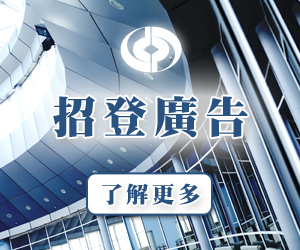The 19th CPC National Congress covers new vision, new thinking and new strategies. Tan Tieniu, Deputy Director of the Liaison Office of the Central Government in the HKSAR, stressed that after going through historic changes in the past five years, China has entered a completely new stage of development in terms of economy, technology, national defense strength and overall national strength.
 Tan pointed out that China’s science and technology innovation is showing profound changes in two aspects: from “quantitative” accumulation to “qualitative” leap, and from “narrowly-focused breakthroughs” to “broad-based improvements”. With the 13th Five-Year Plan for Science and Technology in full swing, China is making progress toward the goal of becoming a global powerhouse in science and technology.
Tan pointed out that China’s science and technology innovation is showing profound changes in two aspects: from “quantitative” accumulation to “qualitative” leap, and from “narrowly-focused breakthroughs” to “broad-based improvements”. With the 13th Five-Year Plan for Science and Technology in full swing, China is making progress toward the goal of becoming a global powerhouse in science and technology.
Numerous sci-tech achievements
Actually, China has achieved outstanding results in various high-tech fields in recent years. Tan cited some examples: the successful launch of Wukong, a dark matter detecting satellite independently developed by the Chinese Academy of Sciences; the world’s largest radio telescope Tianyan (Five-hundred-meter Aperture Spherical radio Telescope, FAST); China has rapidly developed into the third country ever to independently master manned spaceflight technology since the Central Government kickstarted its space program in 1992; the unmanned submersible Haidou made China the third country after the US and Japan to build submersibles capable of reaching depths in excess of 10,000 meters; and the Sunway TaihuLight is the world’s most powerful supercomputer.
A race to the top in AI
 Countries across the world are investing in research and development of artificial intelligence (AI), which is set to be a technology that the world will heavily rely upon in the future. Tan said that AI is penetrating all trades and industries, such as manufacturing, services, finance, education, media, medical care and automobiles. Meanwhile, China’s AI research and output are ranked among the top in the world. According to the Next Generation Artificial Intelligence Development Plan recently issued by the State Council, China aims to catch up with the forerunners in AI technology development and applications by 2020, and become the premier global AI innovation center by 2030.
Countries across the world are investing in research and development of artificial intelligence (AI), which is set to be a technology that the world will heavily rely upon in the future. Tan said that AI is penetrating all trades and industries, such as manufacturing, services, finance, education, media, medical care and automobiles. Meanwhile, China’s AI research and output are ranked among the top in the world. According to the Next Generation Artificial Intelligence Development Plan recently issued by the State Council, China aims to catch up with the forerunners in AI technology development and applications by 2020, and become the premier global AI innovation center by 2030.
HK’s great opportunity for I&T development
On the prospects for IT development in Hong Kong, Tan stressed that the 13th Five-Year Plan explicitly states its support for Hong Kong’s IT development and will actively drive Hong Kong to become an internationally oriented national center for technology innovation.
In addition to state support, Tan believes that Hong Kong has the foundation and advantages for IT development. For example, Hong Kong has the world’s top-ranked competitive economy for many years, high-standard institutions of higher learning, a pool of high-end science and technology talents from around the world, and well-established and first-rate professional services. The HKSAR Government is also showing a firm determination and has put forward numerous initiatives in its latest Policy Address.
 As an international financial center, Hong Kong must keep pace with the times. Merrill Lynch predicts that the financial sector will be the most commercially viable sector for AI applications. Tan believes that Hong Kong has the strengths and needs for developing smart finance. In addition, given the institutional advantages of the “one country, two systems” principle, Hong Kong as a highly cosmopolitan city can leverage its own strengths to build itself into an internationally influential scientific research center, technology collaboration center and technology service center.
As an international financial center, Hong Kong must keep pace with the times. Merrill Lynch predicts that the financial sector will be the most commercially viable sector for AI applications. Tan believes that Hong Kong has the strengths and needs for developing smart finance. In addition, given the institutional advantages of the “one country, two systems” principle, Hong Kong as a highly cosmopolitan city can leverage its own strengths to build itself into an internationally influential scientific research center, technology collaboration center and technology service center.
Tan also mentioned that the 19th Congress has set out new orientations, new opportunities and new requirements for the “one country, two systems” principle as well as the work of Hong Kong and Macao. He encouraged Hong Kong to maximize its unique strengths and role in major national policies and actively invest in the “Belt and Road” initiative and construction of the Guangdong-Hong Kong-Macao Great Bay Area in order to integrate into the country’s development and achieve prosperity and stability for Hong Kong.




